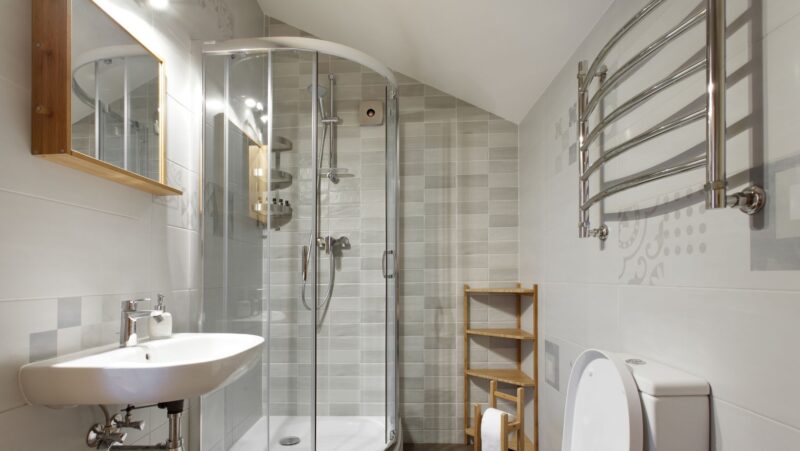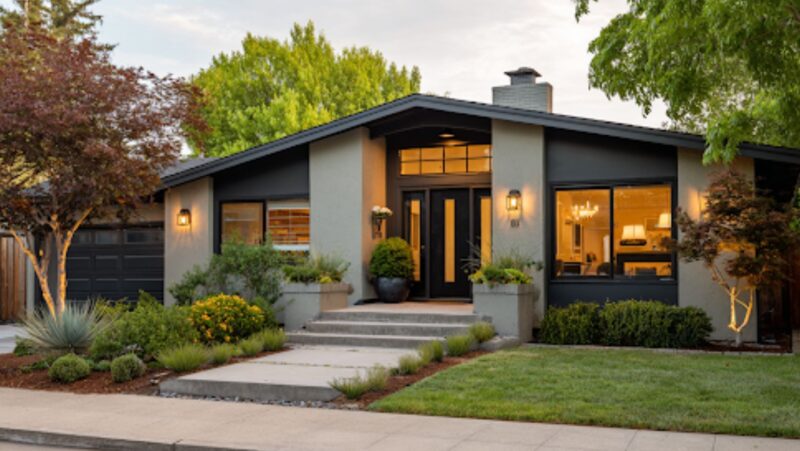When it comes to home improvement projects, few things offer the satisfaction and curb appeal of a well-installed fence. I’ve found that composite fence panels are a fantastic option for DIY enthusiasts like myself. These panels combine durability with aesthetic appeal, making them a popular choice for homeowners who want to enhance their property’s privacy and style without breaking the bank.
What makes composite fence panels particularly appealing is their user-friendly nature. Unlike traditional wood, which requires regular maintenance, composite materials are designed to withstand the elements with minimal upkeep. This means I can spend less time worrying about repairs and more time enjoying my outdoor space. Plus, with a variety of colors and textures available, I can customize my fence to match my home’s exterior perfectly.
In this article, I’ll walk you through the basics of installing composite fence panels, sharing tips and tricks to ensure a smooth and successful DIY project.
Understanding Composite Fence Panels
Composite fence panels combine wood fibers and plastic, creating a durable and robust barrier. They’re engineered to resist rot and pests, outperforming traditional wood. Since they’re pre-colored, these panels maintain their aesthetic without painting, reducing maintenance effort.
Attributes of composite fence panels make them suitable for DIY projects. Panels come in various heights and styles, enabling customization. For instance, panels mimicking natural wood grain or modern geometric patterns suit different landscaping designs.
Installation ease defines composite fence panels. Individual parts fit together, often using slot or tongue-and-groove systems, facilitating straightforward assembly. Tools like saws, drills, and tape measures suffice for cutting and securing panels.
Environmental benefits of composite panels appeal to eco-conscious consumers. Often made from recycled materials, they conservatively use resources. Their longevity further minimizes replacements, lessening waste.
Costs may be higher initially than wood, yet savings accrue over time due to minimal upkeep and repairs. This long-term value makes them a favored choice for homeowners investing in outdoor living spaces.
Resistance to Common Weather Conditions boosts the appeal. These panels withstand sun, rain, and wind without warping or fading, ensuring they remain attractive across seasons. Enhanced resilience enhances their functional life, providing peace of mind with less frequent replacements.
Incorporating these attributes yields a visually pleasing, practical fencing solution. Composite fence panels offer a blend of style, strength, and ease, supporting various home improvement initiatives effectively.
Benefits of Using Composite Fence Panels
Composite fence panels offer several advantages for homeowners looking for a DIY-friendly fencing solution. Their blend of materials ensures durability and ease of maintenance while providing an attractive appearance.
Durability and Longevity
Composite fence panels exhibit exceptional durability. Made from a mix of wood fibers and plastic, they’re resistant to common issues like rot and insect damage. This resistance extends their lifespan significantly beyond that of traditional wood fences. I’ve noticed they handle harsh weather conditions well, maintaining their structural integrity over the years. This durability equates to fewer replacements and repairs, offering long-term value.
Low Maintenance Requirements
A significant advantage of composite fence panels is their minimal upkeep. They come pre-colored, eliminating the need for painting or staining. The surface resists fading, which keeps them looking fresh without constant attention. I appreciate that an occasional wash with soap and water is often all that’s needed to maintain their appearance. This low maintenance aspect frees up my time for other projects, making them a practical choice.
Aesthetic Appeal
Composite fence panels provide impressive aesthetic options. Available in various colors and finishes, they cater to different design preferences and landscaping themes. I’ve found that these panels mimic the look of wood while offering more modern styles. This versatility allows customization to match my home’s exterior seamlessly.

Their consistent, polished appearance enhances curb appeal, making them a stylish addition to any property.
Tools and Materials Needed
Installing composite fence panels requires a few basic tools and materials, making it an approachable project for DIY enthusiasts. Gathering the right equipment beforehand ensures a smoother installation process.
Essential Tools
- Measuring Tape: I use this for accurate measurements, ensuring the fence aligns properly.
- Drill: Needed for securing panels to posts, I recommend a cordless one for convenience.
- Level: To keep the panels straight, a level checks that everything’s aligned.
- Circular Saw: Handy for cutting panels to fit specific dimensions.
- Post Hole Digger: When setting the posts, this tool makes digging precise holes easier.
- Screwdriver: Necessary for final adjustments, I keep a set ready.
- Composite Fence Panels: Durable and aesthetically pleasing, these panels take center stage in the project.
- Fence Posts: These support the panels, and I choose those that match the panel’s material for a cohesive look.
- Concrete Mix: For stabilizing posts, I use quick-setting concrete for faster results.
- Screws and Fasteners: Essential for connecting panels and posts securely.
Before beginning, I ensure all tools are in good condition, and materials are neatly organized. This setup helps streamline the installation of composite fence panels, allowing for a more straightforward and enjoyable DIY experience.
Step-by-Step Installation Guide
Installing composite fence panels is straightforward and enhances your property’s privacy and style. Following precise steps ensures a successful installation process.
Preparing the Installation Site
I start by marking the fence line using stakes and a string to ensure alignment. Then, I clear debris and level the ground along this line. Using a post-hole digger, I excavate holes for the fence posts, maintaining a consistent spacing of about 6 to 8 feet, with hole depths approximately one-third the post height. I mix concrete following package instructions, pour it into the holes, and insert the posts, checking vertical alignment with a level. Once set, these posts provide a stable foundation for the composite fence panels.
Assembling the Panels
With posts in place, I proceed to assemble the composite fence panels. First, I refer to the manufacturer’s instructions for assembly guidelines. Using a drill, I secure the frame to the composite panels, ensuring flush edges. If the panels use a tongue-and-groove system, I slide them together, locking them securely. For slot systems, I align panels with slots and attach them using screws. Through careful assembly, composite fence panels achieve both structural integrity and visual appeal and are ready for installation.
Securing the Panels in Place
I align the assembled panels with the mounted posts to secure them in place. Using a level, I verify that each panel is properly aligned both vertically and horizontally. I then fasten the panels to the posts with screws, ensuring even spacing between panels. Adjustments are made if necessary to maintain a uniform top line. With all panels secured, I inspect for stability and make final adjustments as needed. Properly secured composite fence panels offer a lasting and aesthetically pleasing barrier for my property.
Tips for a Successful Installation
Successful installation of composite fence panels depends on careful planning and execution. Following these strategies ensures a smooth process and a professional finish.
Common Mistakes to Avoid
Avoiding common pitfalls is crucial for a successful composite fence installation. One frequent error involves inaccurate measuring, which results in misaligned panels. Double-check all measurements and placement before starting the excavation. Using incorrect tools can also lead to poor installation. Ensure tools match the requirements for composite materials, using drills and saws designed for such tasks. Skipping the leveling step in post-installation often leads to an unstable fence. Confirm that each post is perfectly vertical using a level to prevent future issues. Lastly, rushing the concrete drying process weakens support. Allow ample time for the concrete to cure completely before attaching panels.
Maintaining Your Composite Fence
Ensuring the longevity of composite fence panels requires minimal yet regular upkeep. Cleaning with soap and water keeps panels looking fresh while avoiding harsh chemicals, preserving their integrity. Addressing dirt and stains promptly prevents long-term discoloration.

Inspections after severe weather help identify any potential damage early. Tighten or replace loose screws to maintain panel stability and security. Incorporating these simple maintenance routines extends the lifespan of your composite fence and keeps it looking pristine year-round.
Cost Considerations
When considering the installation of composite fence panels, understanding the cost implications is crucial. An informed approach to budgeting can make the project more manageable and ensure the best value for investment.
Budgeting for Your Project
Effective budgeting begins by calculating the overall cost of materials and labor when using composite fence panels. Factors to consider include the length and height of the fence, as well as the specific style of composite panels chosen. Prices for composite panels vary, typically ranging from $25 to $45 per linear foot, affecting the total cost significantly. Additional expenses may include tools or rental equipment if not already owned. Another important component is the cost of building permits, often required for fencing projects, which can fluctuate depending on local regulations. Allocating extra funds for unexpected expenses ensures the project remains financially viable even if challenges arise. By carefully planning and allocating resources, one can confidently embark on their installation endeavor without financial surprises.
Comparing with Other Fencing Materials
Composite fence panels, though initially more expensive, offer long-term savings compared to traditional materials. For instance, wood fences generally cost $15 to $25 per linear foot but require consistent maintenance, such as painting or staining, which adds to long-term expenses. Vinyl fences come at similar initial costs to composite panels but lack the same level of durability and pest resistance. Steel and aluminum options cost between $30 and $70 per linear foot, often exceeding composite panels without providing aesthetic benefits. At the same time, composite panels demand a higher upfront investment, their longevity and low maintenance translate to cost efficiency over time. Considering both immediate and future expenses allows for an informed choice between composite panels and alternative fencing materials, ensuring optimal use of resources.





